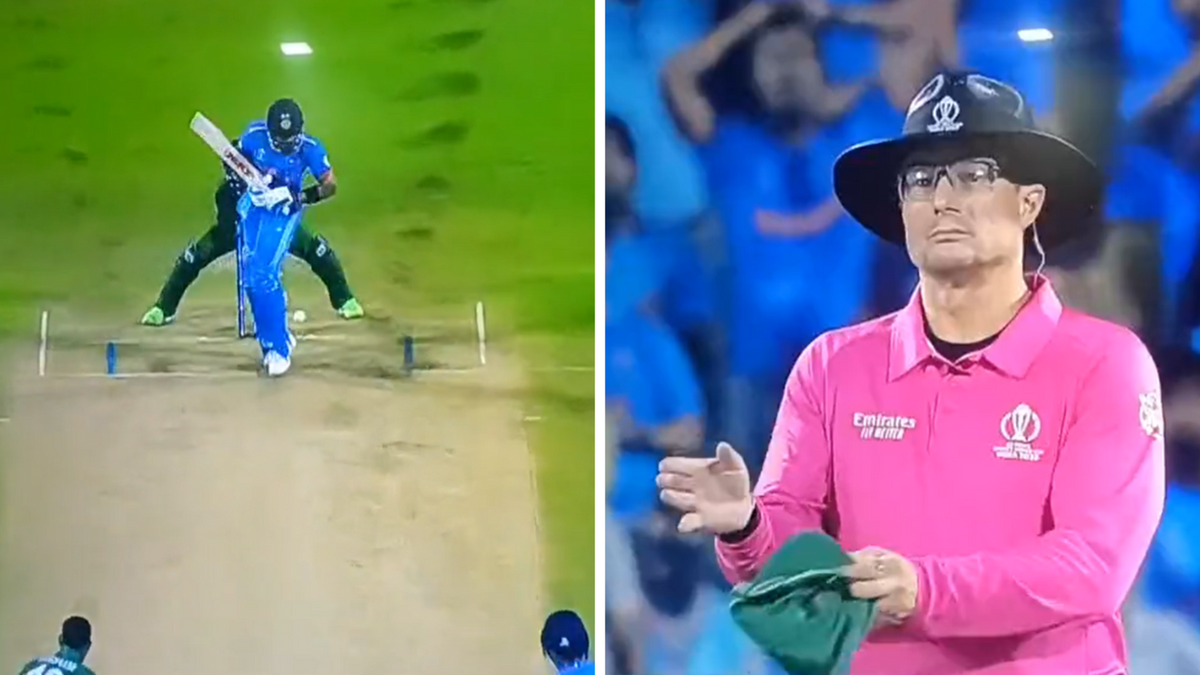
Virat Kohli broke his long World Cup century drought, and a controversial non-wide call by umpire Richard Kettleborough helped him to do so. Could a recent change to the Laws of Cricket have aided Kohli’s cause?
To bet on the World Cup with our Match Centre Partners bet365 head here.
The 42nd over of India’s chase against Bangladesh began with the game settled, but the race was on for Kohli to reach three figures. India needed two to win, and he was on 97.
He reached three figures and won the game with a six on the third ball of the over, but not before a decision by the umpire raised eyebrows. The first ball, delivered by Nasum Ahmed, passed down the leg-side, but no wide was signalled, Kettleborough having a smirk on his face as his arms stayed in place.
Many assumed that Kettleborough had chosen to allow Kohli full opportunity to make a century, rather than make a decision to lessen the chances, and the umpire came in for some criticism for doing so. However, it’s also possible that a change to the Laws of Cricket in 2022 played a part. Strangely, it was a law change brought in to help bowlers, but may have assisted a batter in this case.
Before the change to the law, clause 22.1.1 in the MCC Laws of Cricket, which talks about Judging a Wide, states: “If the bowler bowls a ball, not being a No ball, the umpire shall adjudge it a Wide if, according to the definition in 22.1.2, the ball passes wide of where the striker is standing and which also would have passed wide of the striker standing in a normal guard position.”
In March 2022, the MCC announced a new Code of Laws set to take effect from October 1, thus affecting Clause 22.1.
“In the modern game, batters are, more than ever, moving laterally around the crease before the ball is bowled,” read a statement from the MCC. “It was felt unfair that a delivery might be called ‘Wide’ if it passes where the batter had stood as the bowler entered his/her delivery stride.
After this decision, One must forgive Richard Kettleborough for every bad decision he gave against Virat Kohli !!
— Gss🇮🇳 (@Gss_Views) October 19, 2023
“Therefore, Law 22.1 has been amended so that a Wide will apply to where the batter is standing, where the striker has stood at any point since the bowler began their run up, and which would also have passed wide of the striker in a normal batting position.”
Close examination of the non-wide suggests this could have played a part. As the bowler begins running in, Kohli is in an open stance, with his front foot planted significantly further towards the leg-side than it is when the ball passes by him, with another small shuffle coming as the ball is sent down.
If the ball would had hit Kohli if he had stayed still, then not calling it wide is the right decision.








